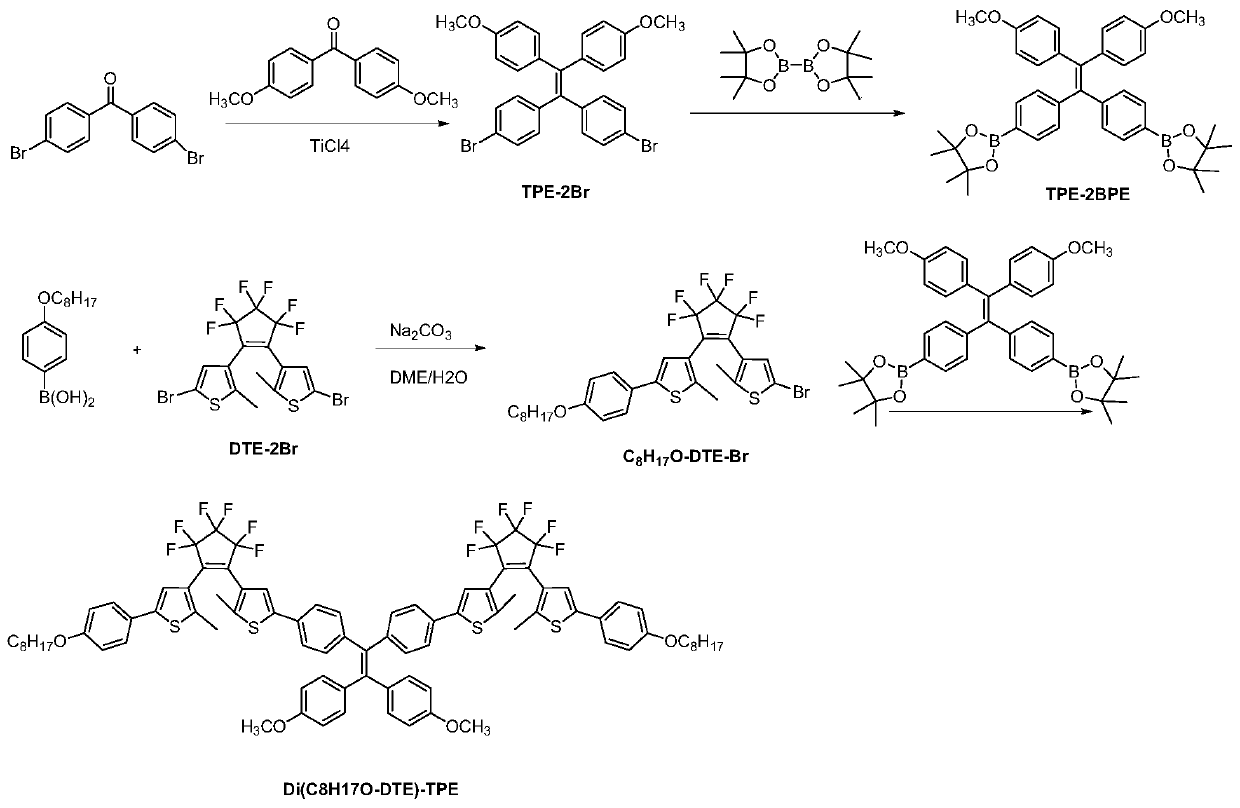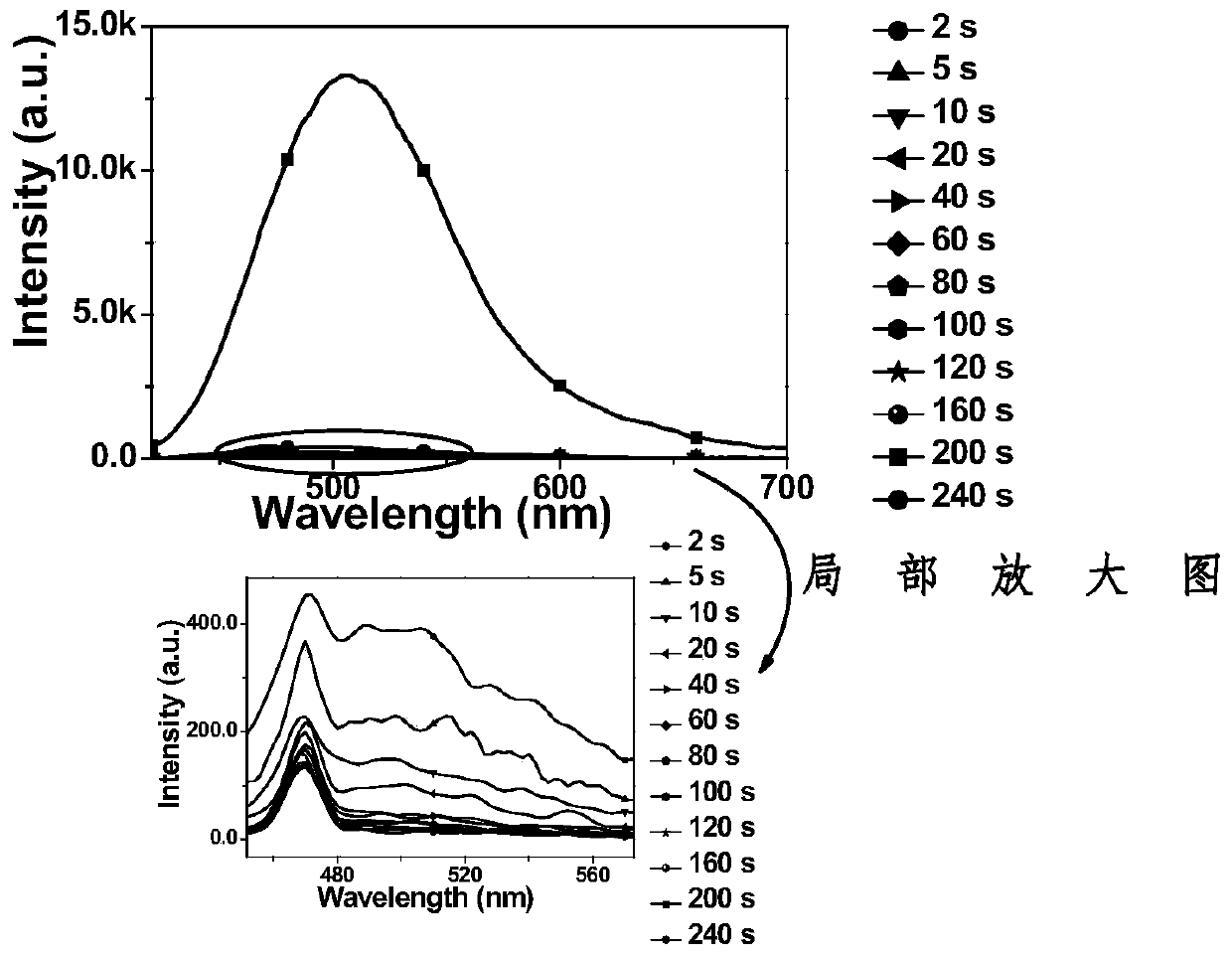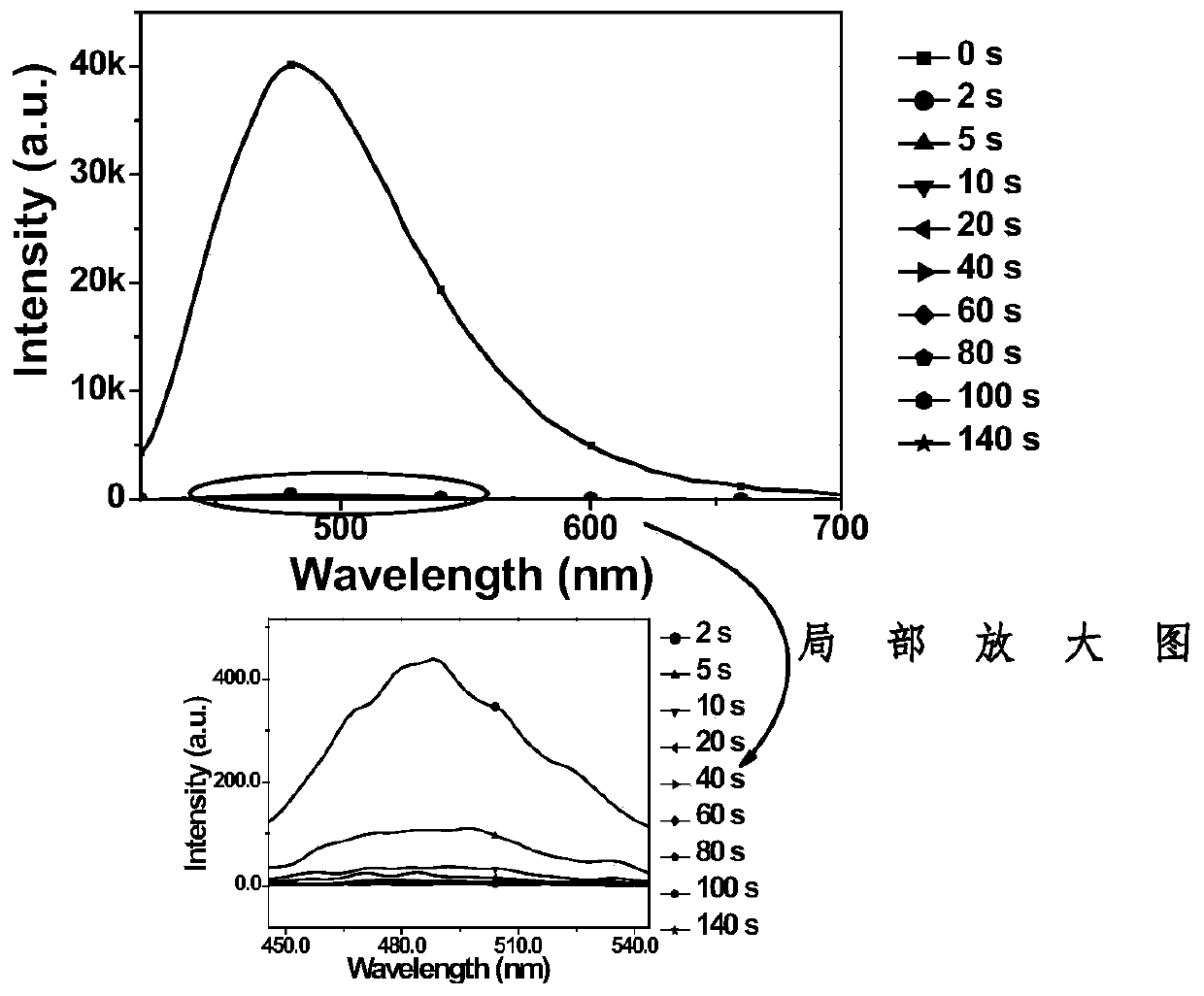A diarylethene fluorescent molecular switch, its preparation method and application
A technology of diarylethene and fluorescent molecules, which is applied in the fields of fluorescence/phosphorescence, chemical instruments and methods, and material analysis through optical means, and can solve problems such as no visible light response, low fluorescence quenching efficiency, and high fluorescence switch ratio. , to achieve rich molecular switch system, high quantum yield, and simple synthesis
- Summary
- Abstract
- Description
- Claims
- Application Information
AI Technical Summary
Problems solved by technology
Method used
Image
Examples
preparation example Construction
[0059] The preparation method of the above-mentioned fluorescent molecular switch comprises the following steps:
[0060] (1) Using the McMurry reaction to couple the intramolecular or intermolecular ketone carbonyl into an olefinic bond, and then a Miyaura reaction to generate a boronate or boric acid from the halogen group to obtain a tetraarylethene nucleus;
[0061] (2) For an aryl group containing two active sites, the active site at one end of the aryl group is modified by a Suzuki reaction to obtain a diarylethene nucleus retaining the active site at the other end;
[0062] (3) A Suzuki coupling reaction occurs between the tetraarylethene core obtained in step (1) and the diarylene core obtained in step (2) that retains the active site at the other end.
[0063] Specifically, in the formula (2) structure, R 1 and R 2 for R 3 When it is a methoxy group, the preparation method of the corresponding fluorescent molecular switch includes the following steps:
[0064] (...
Embodiment 1
[0082] A kind of diarylethene fluorescent molecular switch shown in formula (two), its name is abbreviated as Di(C 8 h 17 O-DTE)-TPE, where R 1 and R 2 for R 3 For methoxy. Its synthesis route is as follows figure 1 shown, including the following steps:
[0083] (1) Pretreatment with ethylene glycol dimethyl ether blowing nitrogen for 30 minutes to remove dissolved oxygen, raw materials p-amyloxyphenylboronic acid (0.90g, 3.6mmol), 1,2-bis(5-bromo-2methylthiophene -3-yl) perfluorocyclopentene (DTE-2Br) (1.58g, 3mmol) and sodium carbonate (1.59g, 15mmol) were uniformly dispersed in ethylene glycol dimethyl ether and water at a feed ratio of 1:1.2:5 In the 4:1 mixed solution, the catalyst tetrakis(triphenylphosphine)palladium (0.17g, 0.15mmol) was added under nitrogen atmosphere, pumped 3-4 times, the reaction temperature was 90°C, and the reaction time was 20 hours. After the reaction was complete, the organic layer was collected and purified by column chromatography t...
Embodiment 2
[0089] A kind of diarylethene fluorescent molecular switch shown in formula (1), its name is abbreviated as Di(C 8 h 17 O-DTE)-OTPE, R 1 and R 2 for R 3 is H, X is O. Its synthesis route is as follows Figure 7 , including the following steps:
[0090] (1) Mix zinc powder with anhydrous tetrahydrofuran, slowly inject titanium tetrachloride (2.639mL, 23.52mmol) at 0°C under a nitrogen atmosphere, reflux for 3 to 5 hours, cool to room temperature, and dissolve the raw material 2,2'-di Bromobenzophenone (2g, 5.88mmol) and oxantanone (1.154g, 5.88mmol) were dissolved in THF at a feed ratio of 1:1 and quickly added to the system, pumped 3-4 times, the reaction temperature was 80°C, and the reaction time for 5 hours. After the reaction, use 10% K 2 CO 3 The reaction was quenched, and the organic layer was collected and purified by column chromatography to obtain the product OTPE-2Br.
[0091] (2) Potassium acetate (0.934g, 9.54mmol) is quickly poured into the flask, heat...
PUM
 Login to View More
Login to View More Abstract
Description
Claims
Application Information
 Login to View More
Login to View More - R&D
- Intellectual Property
- Life Sciences
- Materials
- Tech Scout
- Unparalleled Data Quality
- Higher Quality Content
- 60% Fewer Hallucinations
Browse by: Latest US Patents, China's latest patents, Technical Efficacy Thesaurus, Application Domain, Technology Topic, Popular Technical Reports.
© 2025 PatSnap. All rights reserved.Legal|Privacy policy|Modern Slavery Act Transparency Statement|Sitemap|About US| Contact US: help@patsnap.com



